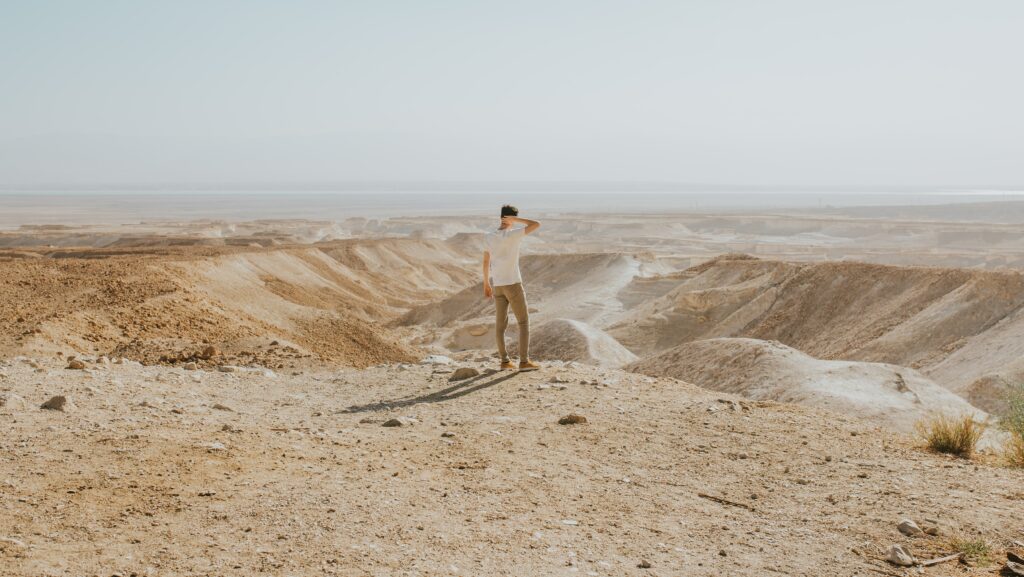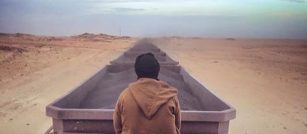Exploring Israel’s History: Top Historical Sites to Visit
They say that Israel is an open-air museum, everywhere you look there is a historical structure. Even below your feet are layers of archaeological treasures left by successive ancient civilizations. There is so much history packed into this small nation that you’ll have to pick and choose which sites interest you. To help you get started here is a list of the top, must-see historical sites to visit in Israel.

Table of contents
How To Get the Most Out of Israel’s Historical Sites
The quickest and most convenient way to discover Israel’s historical sites is with organized tours offered by Israeli companies like Bein Harim Tours. You don’t have to commit to a multi-day tour as there are day tours in Israel that are perfect for reaching those difficult-to-reach places like Masada, the Dead Sea, and Bethlehem.
To get the most out of your trip, divide your time between the north, the center of the country, and the south. If you don’t have your own transport or if you aren’t planning on taking any tours, then perhaps spend a few nights in each of the regions – north, central Israel/Jerusalem, and the south. A large portion of Israel’s historical sites are concentrated in Jerusalem, and Tel Aviv will appeal to those who are more interested in 19th-20th century history.
Top Historical Sites to Visit in Jerusalem
Jerusalem Old City
This is the top site in Israel. It covers 0.35 square feet and is surrounded by thick city walls (you can walk along the ramparts). The Old City is divided into a Muslim, Jewish, Armenian, and Christian Quarter. And here you will find the most sacred sites in Israel. Take at least half a day to explore the historical stone-paved lanes, and visit the top attractions.
- Temple Mount – On a hill in the northern corner of the Old City stands the magnificent Dome of the Rock on Temple Mount. The mount is also home to al-Aqsa Mosque, one of the holiest sites of Islam. It was here on Temple Mount that the first and second Jewish Temples stood. All that remains of the Second Temple is one retaining wall, known as the Western Wall.
- Western Wall – Access to the Western Wall (Kotel or Wailing Wall) is from the Western Wall Plaza, and above and behind the wall is Temple Mount. Jews gather to pray at the Western Wall night and day. It is traditional to place a prayer note between the massive stones of the wall.
- Western Wall Tunnels – To the side of the Western Wall is an entrance to the Western Wall Tunnels. Here you can descend beneath the city and see the excavated continuation of the wall as well as the remains of the Roman city that has long since been built upon.
- Church of the Holy Sepulchre – This 4th-century basilica encompasses several Christian sites. It was built to protect Calvary where Jesus was crucified and the tomb where he was buried. Today the ornate church is shared by several Christian denominations and holds fascinating shrines and altars. Leading to the church is the equally important Via Dolorosa where Jesus walked through the jeering crowds bearing his cross.
- Cardo – In the Jewish Quarter is the excavated Cardo or street that ran through the city during the Roman era.
- Davidson Center – Near the Western Wall is the Davidson Center, an archaeological park and museum. Here you can see excavated remains from various periods in history, including fallen remains from the destruction of the Temple in 70AD.
City of David
Just outside the walls of Jerusalem’s Old City is an archaeological site believed to have been the site of King David’s original city from about 3000 years ago. See the ancient water tunnels that brought water to the city and see the remains of King David’s palace and other structures from that period. This is probably the oldest historical site in Israel. To really understand the structures and remains you should take a City of David walking tour.
Top Historical Sites to Visit in Southern Israel
Masada
On the edge of the Judean Desert, a rock outcrop rises 450 meters above the Dead Sea. About 2,000 years ago King Herod built a massive palace fortress on the plateau summit of Masada. And thanks to its remote, dry location the remains of the fortress are well preserved. Years later in 70AD, after Herod’s fortress had been abandoned, Masada became the refuge for Jewish rebels during the First Jewish-Roman War. The group of about 900 Jews, men, women, and children, held out against an army of 15,000 Romans who had them under siege for two years. But before the Romans managed to scale the steep sides of Masada to attack the rebels, the Jews chose suicide rather than being captured. Masada became a symbol of Jewish bravery and dedication to the Jewish nation. Visitors can reach the top of Masada by hiking the snake path (which takes about 40-100 min) or taking the cable car:
Nabataean Cities of the Negev
Among the lesser-visited archaeological sites of southern Israel are the sites of ancient Nabatean cities that once stood on the Incense Route that merchants followed from Arabia to the north. There are four Nabataean towns in the Negev – Mamshi, Ovda, Shiva, and Haluza. Ovda was the largest of the five cities and is located 5 minus from Mizpa Ramon. Mamshit is the smallest but the best preserved. Shivta is perhaps the most interesting with the most structures remaining.
Top Historical Sites in Tel Aviv
Independence Hall
At 16 Rothschild Avenue, you’ll find the original building where Israel’s Declaration of Independence was signed on May 14, 1948, in the presence of David Ben Gurion and other members of the Jewish National Council. Today the historical building is a museum.
Jaffa
Tel Aviv and neighboring Jaffa are a joint municipality and you can walk between the two cities easily. Jaffa is a treasure trove of historical buildings and unique markets and stalls. Visit the Jaffa port, Old Jaffa, and St. Peter’s Church. Enjoy the flea market, and don’t leave before eating in one of Jaffa’s excellent restaurants.
Bauhaus Buildings
History in Israel is not always found in a museum, and it is not always ancient history. If you want to get a feel for Tel Aviv in the 1930s to 50s, take a walk along the tree-lined streets and admire the Bauhaus architecture.
American-German Colony
This is a small historical site tucked away in the heart of Tel Aviv. Here you can see traditional wooden houses from the 19th century in excellent condition. You’ll find his hidden gem on Auerbach and Bar Hoffman Streets.
Sarona
Sarona is a lively shopping, dining, and relaxation complex housed in a former German Templer Colony from 1871. The complex has beautiful green areas, is housed in historical houses, and has a specialty food market. German Templers also settled in Jerusalem and Haifa where you can visit the restored colonies as well.
Top Historical Sites to Visit in Northern Israel
Caesarea National Park
Here on the edge of the Mediterranean Phoenicians built a trade station in the 4th century BC. Then from 25 to 13BC, King Herod had a port and city built on the same site. The city had markets, homes, temples, palaces, and bathhouses. It also had a large Roman theater, a hippodrome, and aqueducts that brought fresh water to the city. In the centuries that followed Caesarea was occupied by Muslims, Crusaders, and Mamluks, all of whom left impressive structures at the site. Today the excavated ancient remains are protected within the Caesarea National Park. Visitors can walk among the various structures of the city, and go down to the water’s edge. There is a perfectly preserved Roman theater that is still used for performances.
Capernaum
Now known as Nachum Village, Capernaum is home to the remains of a 4th-5th century synagogue, with inscriptions in Aramaic and Greek. A church has been built around the remains of another ancient structure that is believed to have been Saint Peter’s home and the remains of a 5th-century octagonal-shaped church. A drive around the Sea of Galilee will take you past other fascinating historical sites like Kursi and Tabgha.
Beit She’an
The town of Beit She’an is one of the oldest archaeological sites in the country. It holds remains from the Chalcolithic period, Canaan, and Late Bronze Age. The city was settled by the Egyptians, Greeks, and Romans. Then came the Crusaders, Mamluks, Ottomans, and the British. In other words, countless cultures, and civilizations have passed through Beit She’an leaving their mark. For tourists, the main attraction is the Beit She’an National Park where you can wander around an incredibly preserved Roman city that was once home to over 30,000 citizens. The preservation and restoration of this site is remarkable.
Acre Old City
One of the most beautiful ancient sites in Israel is Acre’s Old City. What makes it so special is that it is packed with structures from various periods in history but is also inhabited, and home to a lively bustling market. Acre is an ancient port city and the impressive fortified city walls hold the city together on the edge of the port. Be sure to visit the underground Crusader city and the restored Hammam of 18th-century Muslim leader el-Jazaar.
Remember, never travel without travel insurance! And never overpay for travel insurance!
I use HeyMondo. You get INSTANT quotes. Super cheap, they actually pay out, AND they cover almost everywhere, where most insurance companies don't (even places like Central African Republic etc!). You can sign-up here. PS You even get 5% off if you use MY LINK! You can even sign up if you're already overseas and traveling, pretty cool.
Also, if you want to start a blog...I CAN HELP YOU!
Also, if you want to start a blog, and start to change your life, I'd love to help you! Email me on johnny@onestep4ward.com. In the meantime, check out my super easy blog post on how to start a travel blog in under 30 minutes, here! And if you just want to get cracking, use BlueHost at a discount, through me.
Also, (if you're like me, and awful with tech-stuff) email me and my team can get a blog up and running for you, designed and everything, for $699 - email johnny@onestep4ward.com to get started.
Do you work remotely? Are you a digital nomad/blogger etc? You need to be insured too.
I use SafetyWing for my digital nomad insurance. It covers me while I live overseas. It's just $10 a week, and it's amazing! No upfront fees, you just pay week by week, and you can sign up just for a week if you want, then switch it off and on whenever. You can read my review here, and you can sign-up here!













 As you know, blogging changed my life. I left Ireland broke, with no plan, with just a one-way ticket to Thailand
and no money. Since then, I started a blog, then a digital media company, I've made
more than $1,500,000 USD, bought 4 properties and visited (almost) every country in the world. And I did it all from my laptop as I
travel the world and live my dream. I talk about how I did it, and how you can do it too, in my COMPLETELY FREE
Ebook, all 20,000
words or so. Just finish the process by putting in your email below and I'll mail it right out to you immediately. No spam ever too, I promise!
As you know, blogging changed my life. I left Ireland broke, with no plan, with just a one-way ticket to Thailand
and no money. Since then, I started a blog, then a digital media company, I've made
more than $1,500,000 USD, bought 4 properties and visited (almost) every country in the world. And I did it all from my laptop as I
travel the world and live my dream. I talk about how I did it, and how you can do it too, in my COMPLETELY FREE
Ebook, all 20,000
words or so. Just finish the process by putting in your email below and I'll mail it right out to you immediately. No spam ever too, I promise!
